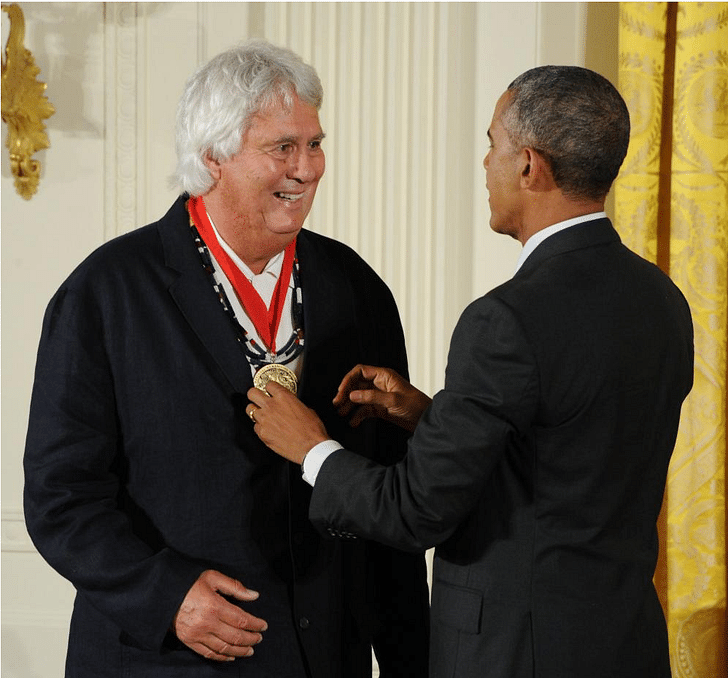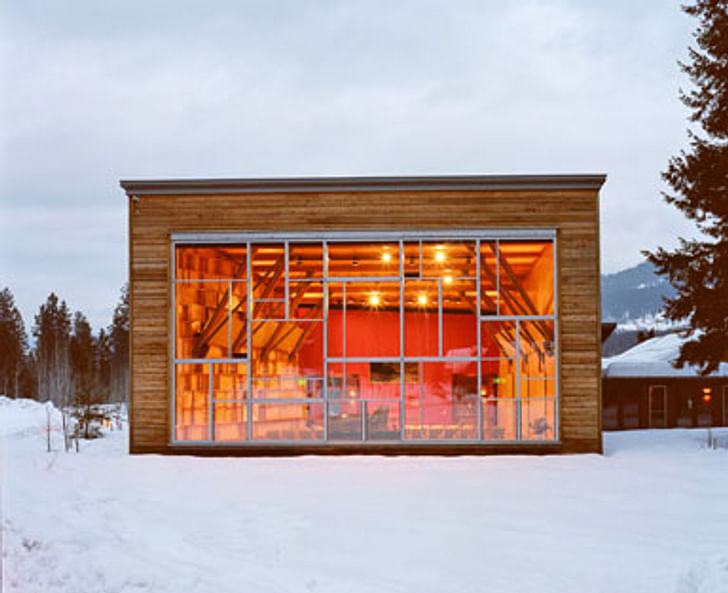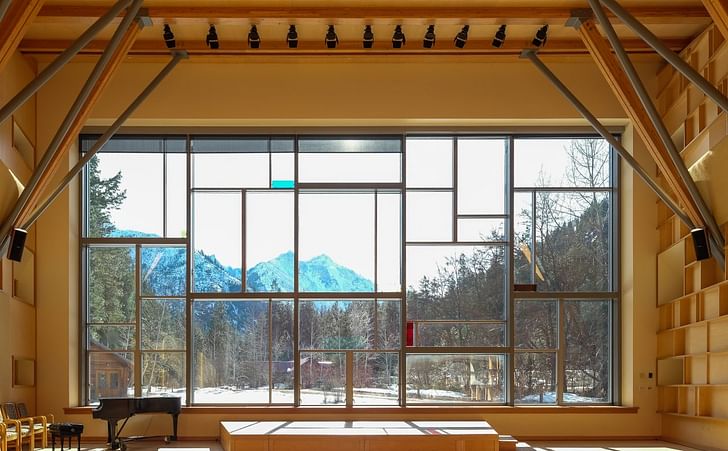

This year, LA County made the long overdue choice to have the second Monday of October officially observed as Indigenous Peoples' Day. As a counter to the controversial Columbus Day, celebrated nationally on the same day, the shift redirects the holiday's focus on the land's original inhabitants and their many contributions.
Community groups and activists around the U.S. have been advocating to end the federal holiday of Columbus Day, considering it a celebration of the genocide of indigenous peoples. First adopted in Berkeley in 1992, Indigenous Peoples' Day has been gaining momentum and is being adopted by new cities every year. This year Austin, Los Angeles, Portland and Salt-Lake city, among others, have joined Berkeley in making the change. In celebration of the many contributions made by Indigenous Peoples' to the fields of architecture and design, here is a look at some of our favorite contemporary practices.
Johnpaul Jones has manifested his Choctaw/Cherokee heritage in the creation of an internationally significant legacy of projects that honor the land as well as his cultural heritage. Founding principal of the Seattle-based firm, Jones & Jones Architects, Jones has worked on the innovative projects such as Seattle's Woodland Park Zoo, the Smithsonian's National Museum of the American Indian, and the Vancouver Land Bridge, the latter alongside environmentalist Maya Lin.
In 2013, Jones won the National Humanities medal, awarded by Barack Obama, for "honoring the natural world and indigenous traditions in architecture."

One of his celebrated projects, Icicle Creek Music Center is a music education campus composed of small practice rooms, assembly practice rooms, an auditorium, office spaces and a library. Every building has one large window connecting the interior space to the scenic outdoor landscape.

The center broke new ground for application of environmentally sensitive design principles and products, and was recognized in 2000 by the AIA with its national Energy and Architecture Award, and in 2001 with citation among the AIA's "Top Ten Green" projects in the nation.

Jones' project also include the design of infrastructures and landscapes. One example is the Vancouver pedestrian land bridge, that reconnects historic Fort Vancouver to the city’s waterfront. Jones’s design is inspired by the cultural significance of the circle, a Native American symbol of the life cycle.

First Nations architect Douglas Cardinal is known for the soft curves of his buildings. He studied at the University of British Columbia and the University of Texas at Austin and has completed numerous buildings in Canada and the United States, including the Museum of Civilization in Ottawa and the Smithsonian's National Museum of the American Indian. Of Algonquin heritage, Cardinal's work is influenced by his background drawing inspiration from the natural rhythms of his native sensibilities. Of his designs he has said, “it’s a real opportunity to show the true beauty and value of the First Nations philosophy and to be able to express it in the design of the building . . . to show an alternative to [current] buildings that I don’t feel really have an empathy for people at all.”
More recently, Cardinal has been working on a 39 story condo tower in Toronto. He speaks about the project in this filmed interview.
Cardinal will represent Canada at the 2018 Venice Architecture Biennale, the exhibition Unceded will be on view at the Arsenale in Venice from May 26 to Nov. 25, 2018.
Tamarah Begay is the first female member of the Native American Navajo tribe to become an architect and an AIA member. She runs Indigenous Design Studio + Architecture (IDS+A), a Navajo Woman-owned architectural firm based in Albuquerque, New Mexico. The team of six architects and one community facilitator lead by Begay realizes projects in Navajo communities in New Mexico, Arizona and Utah. Their mission is "to provide unique, sustainable and innovative designs for all Native American Tribes throughout the country, where they can be stimulated by the experience of the designs that encompass their natural surroundings while preserving their history and culture."
This video presents one of their projects for the Monument Valley Welcome Center:
Patrick Stewart is a Haida architect, activist and writer based in Vancouver. Stewart gained a lot of attention within the field when, as part of his PhD degree, he wrote a 52,438 word architecture dissertation without using any punctuation marks.
About the project Stewart said: “I wanted to make a point about aboriginal culture, colonialism, and 'the blind acceptance of English language conventions in academia."
Chris Cornelius, founding member and principal of Studio Indigenous, is an enrolled member of the Oneida Nation of Wisconsin. Also a professor at the University of Wisconsin-Milwaukie School of Architecture and Urban Planning, his research centers around the architectural translation of culture, in particular, Native American culture.
His practice, studio:indigenous—which provides design and consulting services to Native American clients—recently won the 2017 Miller Prize for their project at the first Christian church part of Exhibition Columbus. The winning design, Wiikiaami, is inspired by the dwellings of the Miyaamia people indigenous to Indiana. The structure is aligned both to the church’s campanile and to mark the autumnal equinox, the tiles resemble the feathers of an eagle.
He describes the project in this interview:
Inspired by the stone found on site, the outdoor changing room for the sweat-lodge at the Indian Community School of Milwaukee, blends with the Landscape.
Noémie Despland-Lichtert is an urban historian, curator, educator and hot-dog mapper.
No Comments
Block this user
Are you sure you want to block this user and hide all related comments throughout the site?
Archinect
This is your first comment on Archinect. Your comment will be visible once approved.